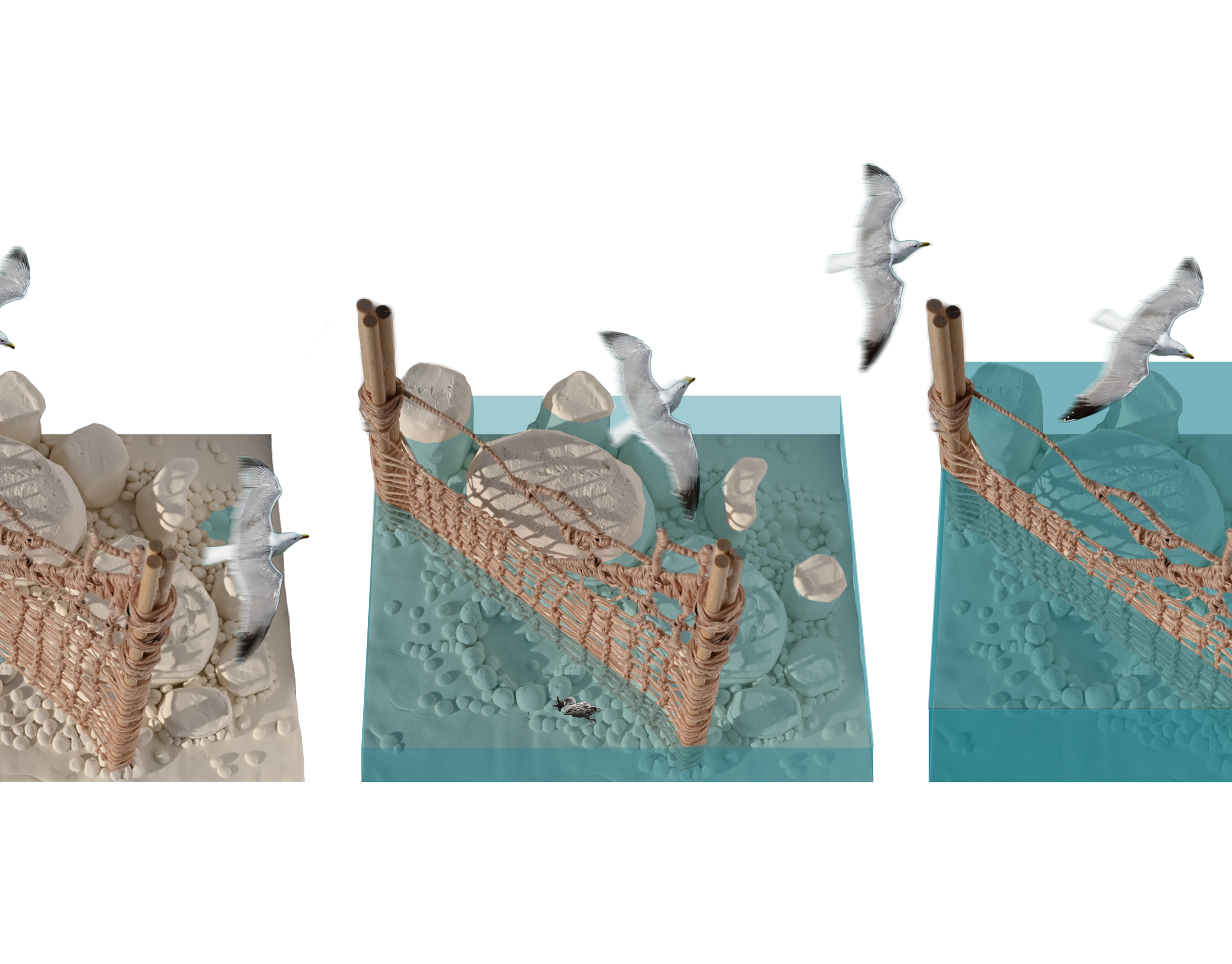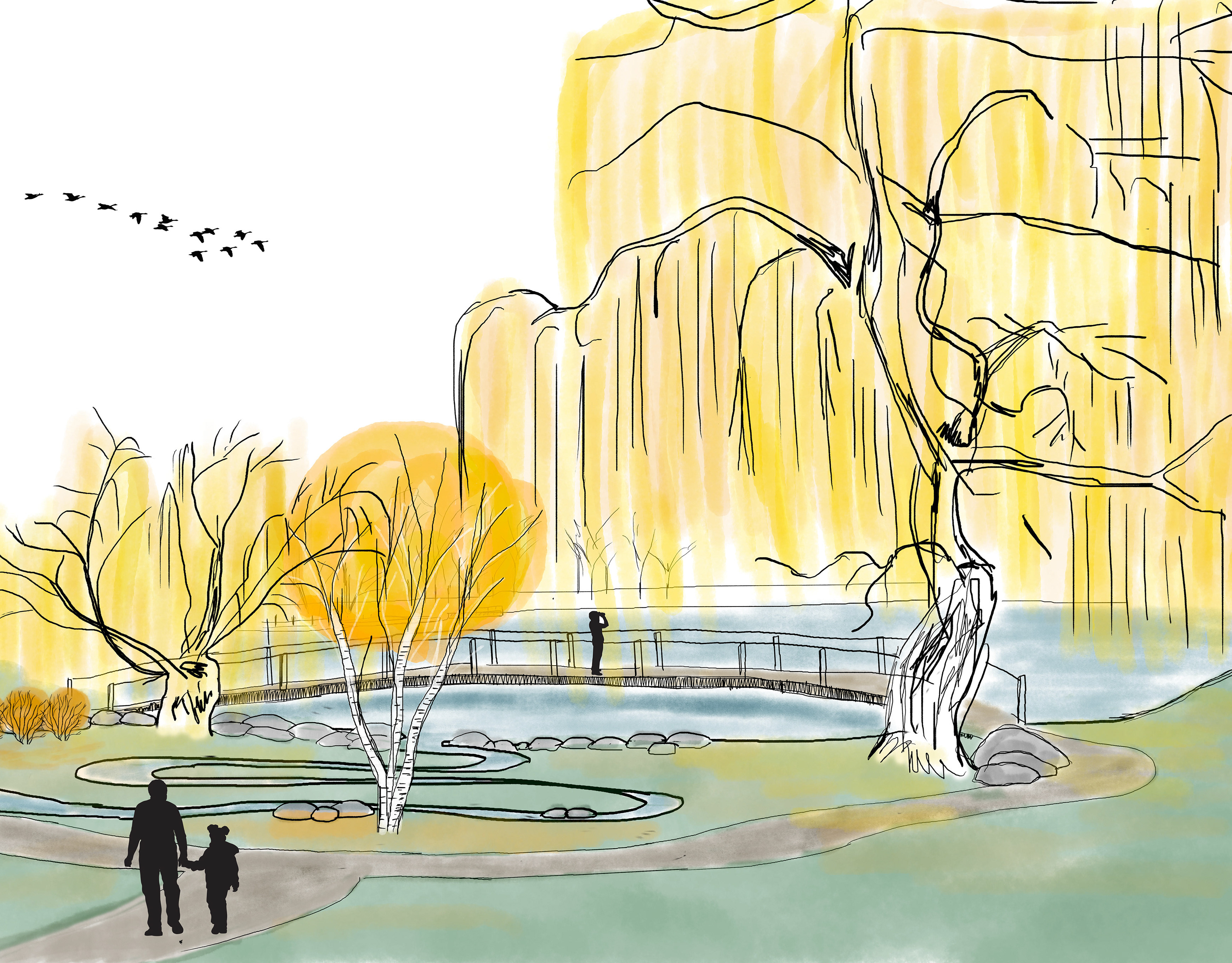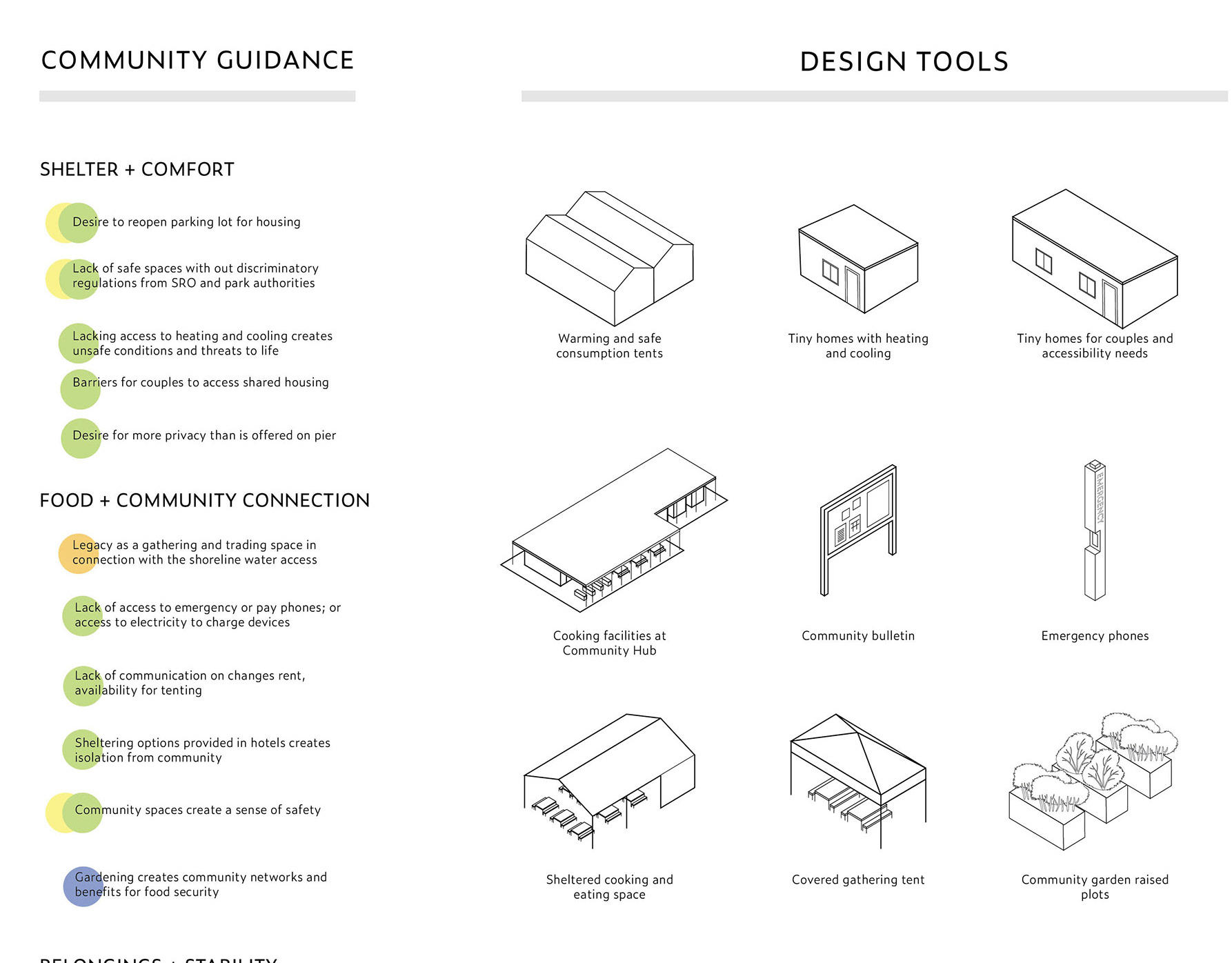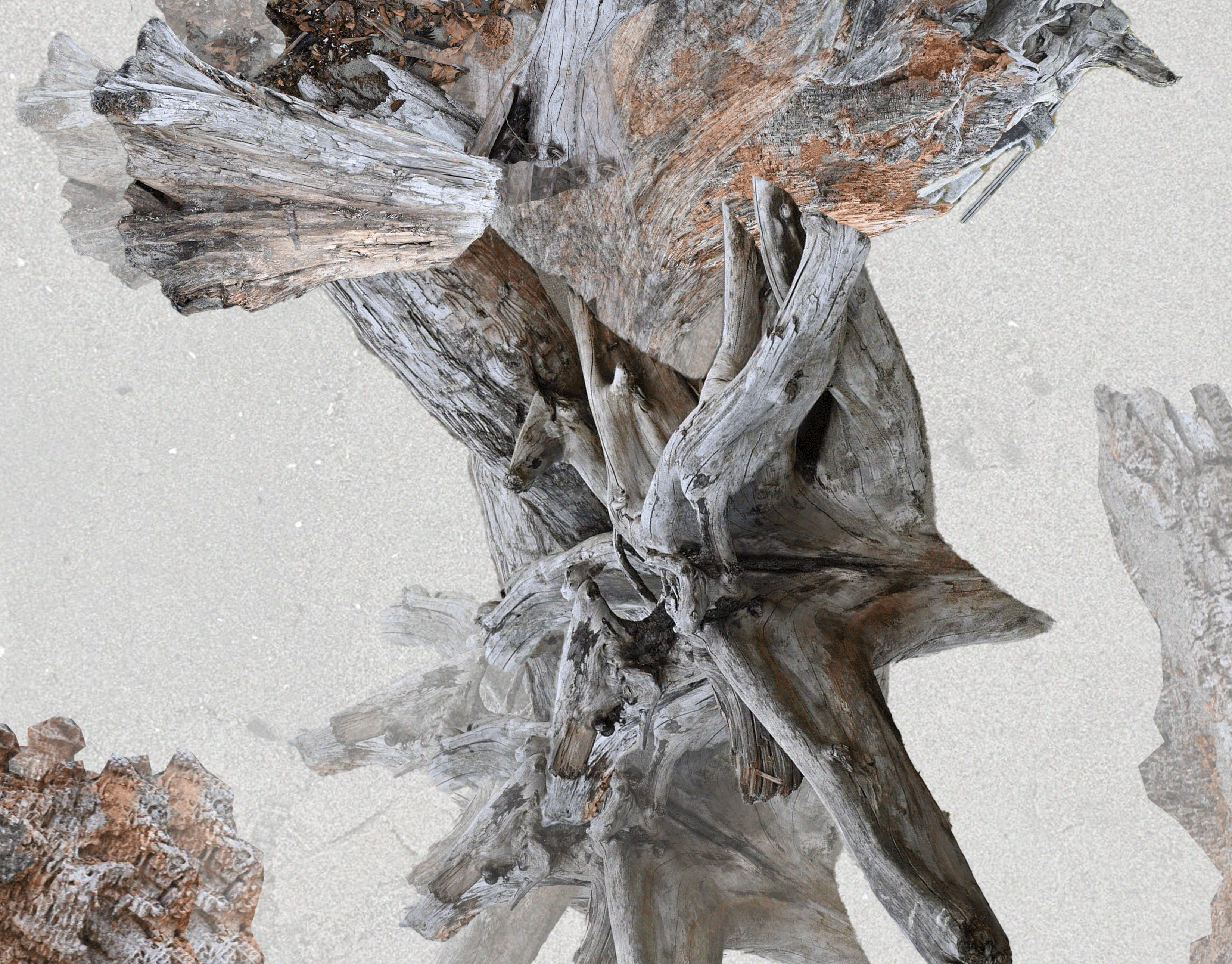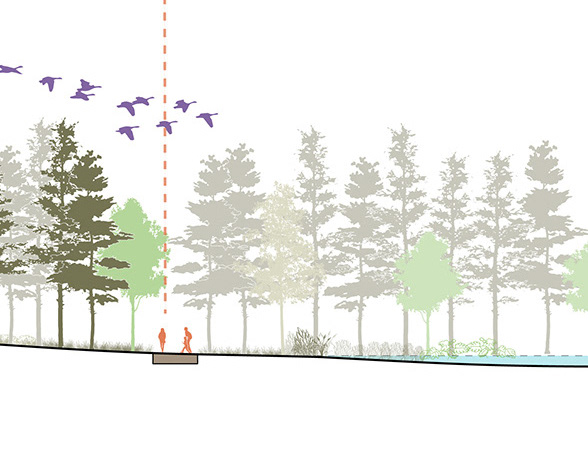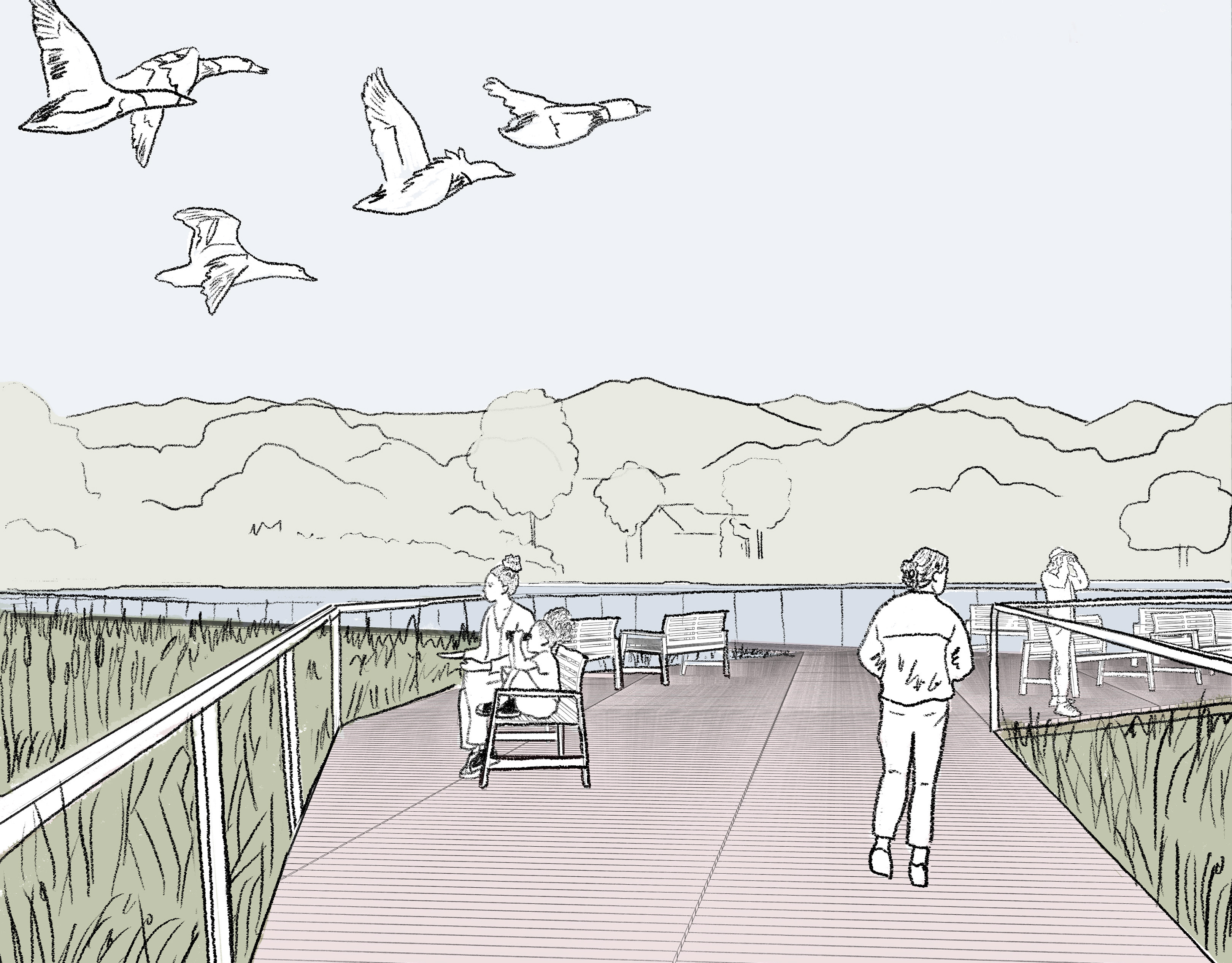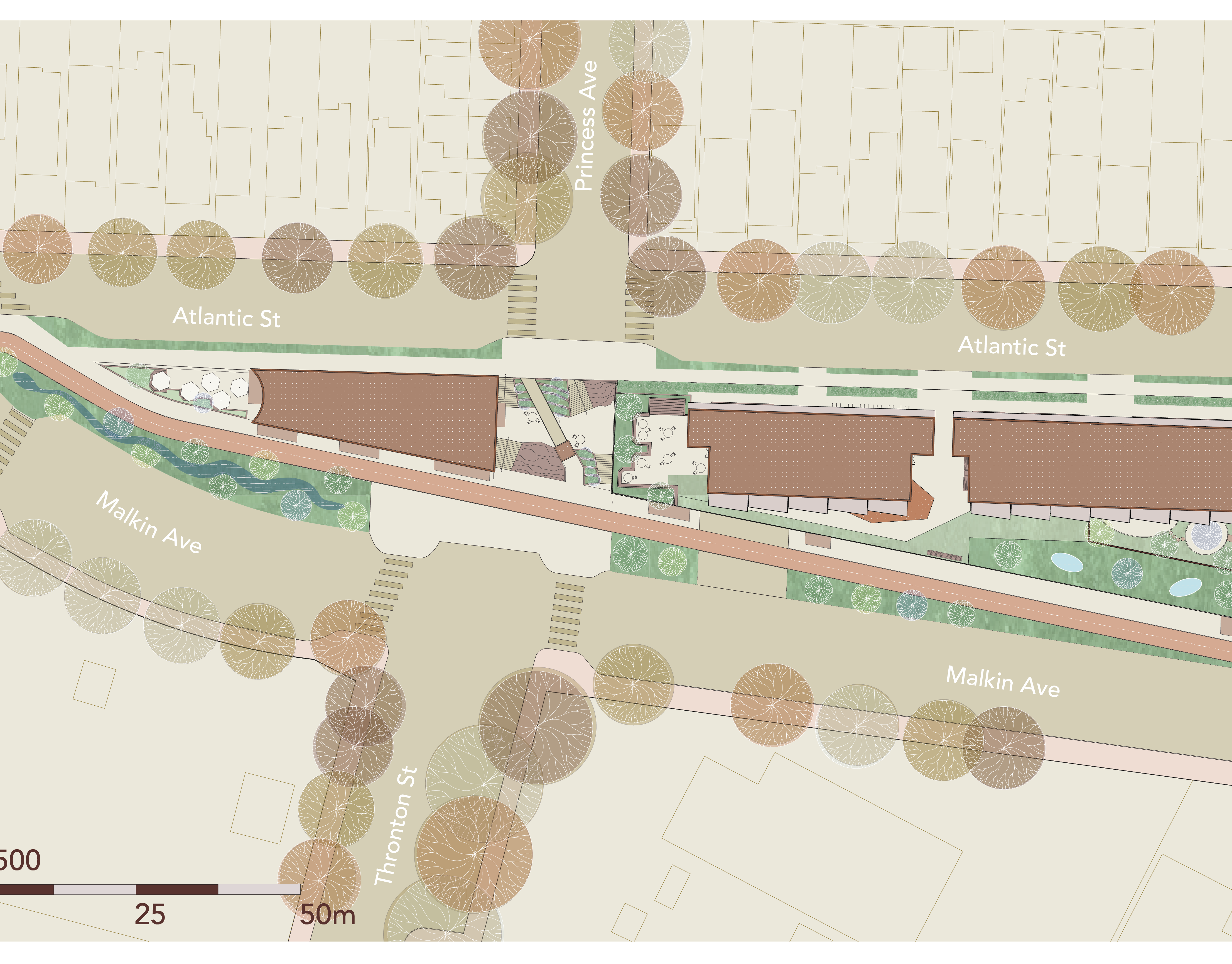Project Description
This project depicts the cyclical nature of seasonal natural hazards in Stanley Park. In researching the hydrology of Stanley Park I was interested in the way that climate change has already impacted the park and how it will continue to do so in more extreme ways. In particular, I was interested in examining the way that extreme heat conditions in the summer increase the risk of wildfire and lower air quality from wildfire smoke. This extreme heat also leads the soil to dry out and be less able to absorb water in the rainy season, causing more extreme flooding conditions. I was also interested in how increases in precipitation events in the winter months are leading to more intense king tides and flooding conditions, further contributing to the erosion of the sea wall and soil surrounding the park.
This project was completed in Fall 2022 for the Introductory Landscape Architecture Studio at the University of British Columbia (UBC), with direction from Sara Jacobs, UBC Professor, and Tatiana Nozaki, HAPA Landscape Designer.
Thick Section
Group Work
In preparation for developing the thick section exploring extreme weather and hydrological variations in Stanley Park, I first became familiar with the site of Prospect Point Lighthouse to Chaythoos in collaboration with my peers, Connor Budd, Dean Anesi, and Hongkai Qiu. We collaboratively created an isometric and section to represent the site using Rhino and Adobe Illustrator. This further informed the intervention I designed, Visibility of a Changing Climate.
